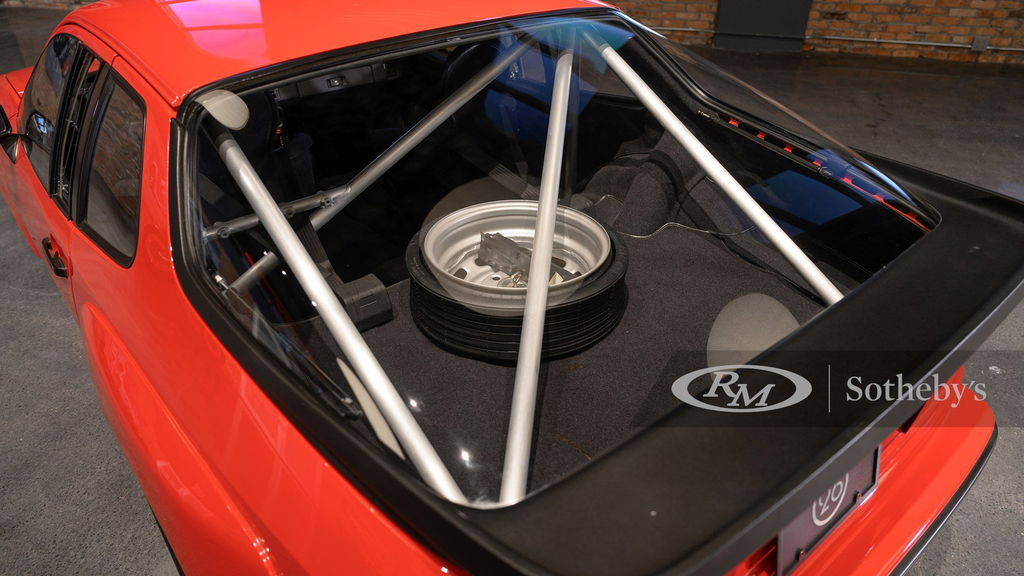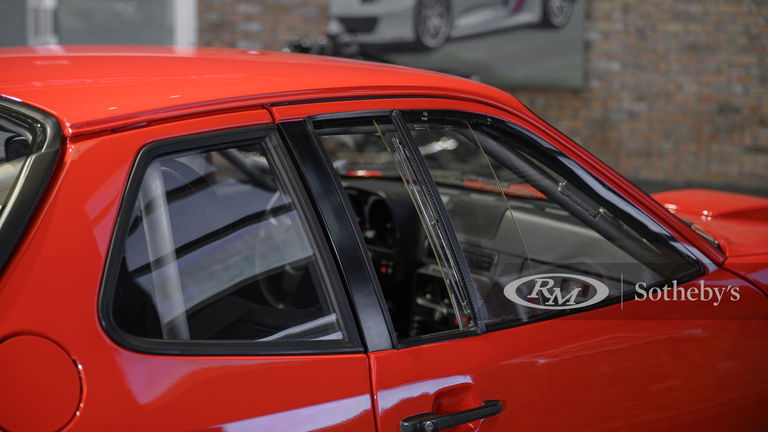Initially, 500 examples were required by the FIA, but during the development phase, this number was relaxed to 400. The Carrera GT was lighter by 330 pounds, lowered, and fitted with an uprated engine producing 210 horsepower. The Carrera GT’s body was modified to allow much wider front and rear track with extended front fenders and rivet-on flares on the rear quarters. These changes accommodated seven- and eight-inch-wide Fuchs forged alloy wheels and correspondingly wider tires.
When this series had been completed, Porsche took another step, creating an “Evolutionary” model that required just 50 street-legal examples, and they were named the Carrera GTS. All of these cars were aimed at winning FIA recognition for the brilliant 924 GTP, of which three were constructed to compete in the 1981 24 Hours of Le Mans. The trio not only completed the twice-around-the-clock endurance classic, but finished a quite amazing 6th, 12th, and 13th overall.
Of this group of limited roadgoing examples there was even more exclusive option—the Club Sport—which was considerably more powerful. The bore was increased slightly to raise displacement to 2,093 cubic centimeters, and a larger air-to-air intercooler helped produce 275 horsepower at 1.1 Bar. It could touch 60 mph in 5.2 seconds and see 160 mph. At the time, it was said to be the fastest production car Porsche had ever built.
This example was completed on 11 February 1981 and then shipped to Bob Hagestad Porsche-Audi in Denver, Colorado. There it was sold to its first owner, Dr. William Jackson, an ophthalmologist from Pine Cliff, Colorado, on 23 July 1982. The retail price was $44,062. Soon after his purchase, Dr. Jackson entertained the possibility of driving his new car on the street, but a letter from Mr. John Hitt, Hagestad’s sales manager, quickly disabused him of that idea. The letter stated that the car was sold on a bill of sale, without any MSO or title, and that “This car can only be used for the purposes of show, testing, experiment, competition, and repairs or alterations and will not be sold, licensed, or registered for use on public roads in the U.S.” It also notes that many cars like this are bought for collectible purposes and will not meet EPA standards in the US. Indeed, only a handful would reach the United States. In April 1987, Dr. Jackson had Eurosport, Ltd. of Englewood, Colorado, service the car and install a set of racing slicks. He otherwise stored the car amongst his collection of rare and highly original Porsches.
In August 2005, Dr. Jackson sold the Carrera GTS to John Dixon, only the second owner, at the Taj Ma Garaj in Dayton, Ohio. The vehicle was subsequently purchased out of that collection in 2019 and entered the respected care of Garage 26. Most recently serviced in 2021 by RM Engineering Solutions, the Porsche has a fuel leak issue diagnosed and fixed. In addition, the car received new engine belts, engine oil, and spark plugs. The parts and labor for this job add to $8,142 and these items are further detailed within an invoice on file.
Notably, the engine and transmission numbers on the Porsche Certificate of Authenticity do not match those currently in the car. As these special cars were hand-built at Porsche’s Weissach facility, it is understood that numbered components commonly changed between initial specification and final completion, creating such disparities on build documentation. Further, in speaking with the original owner, the car remains as he acquired it new in 1982 and has only been driven a handful of miles since he first took delivery.
This rare and very desirable 924 Carrera GTS Club Sport is supplied with a tool kit, spare wheel, jack, factory literature, dealer correspondence, and a file of service receipts. With its incredibly low mileage, it could be returned to track-ready condition—or simply appreciated in its dazzling original condition.































